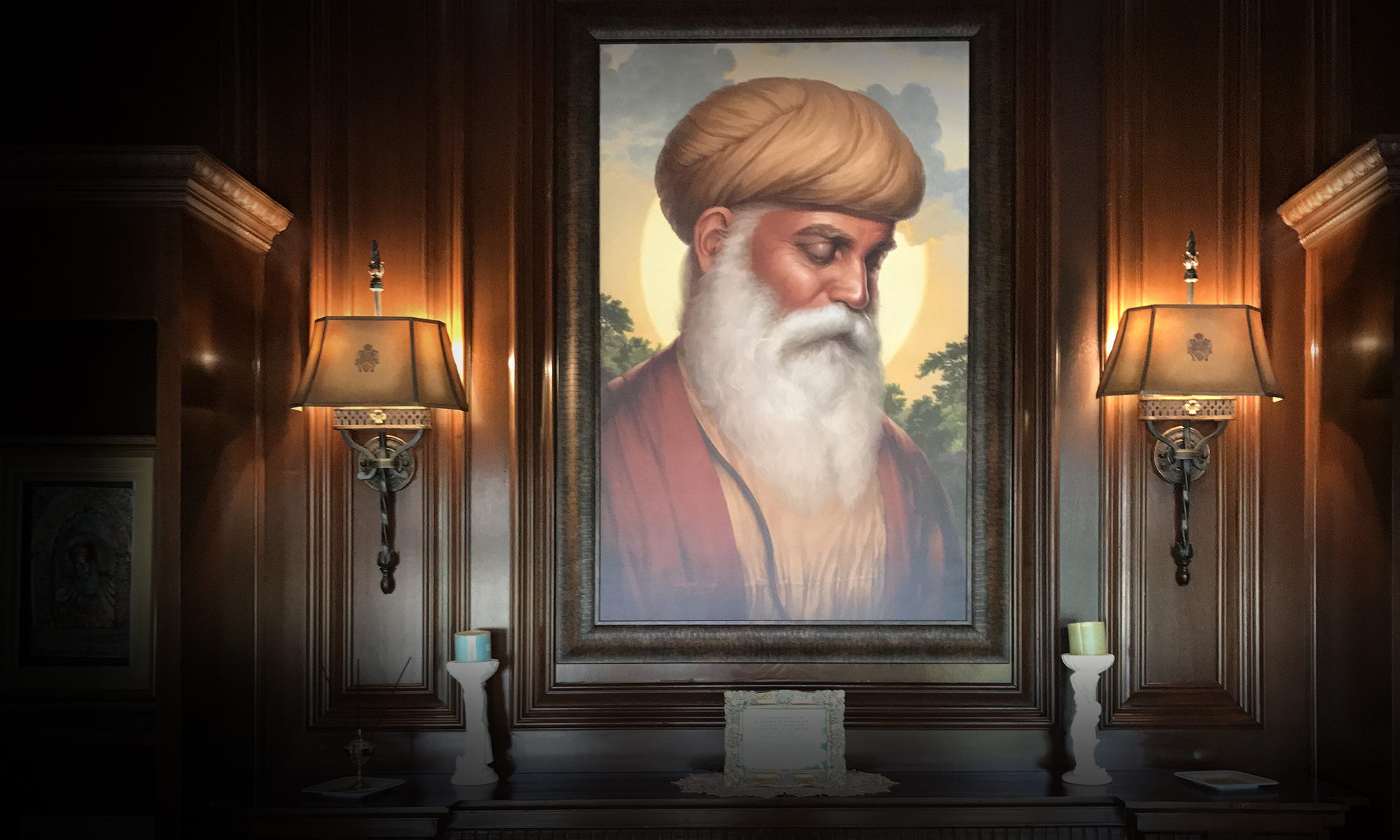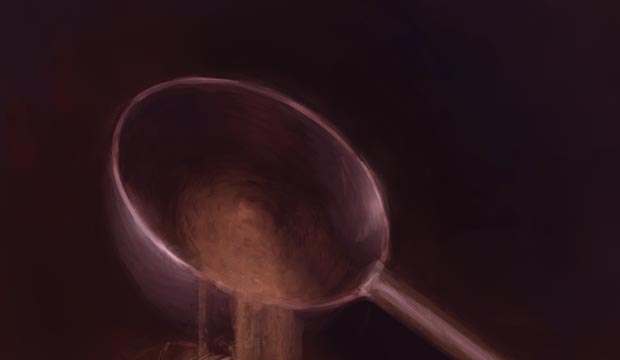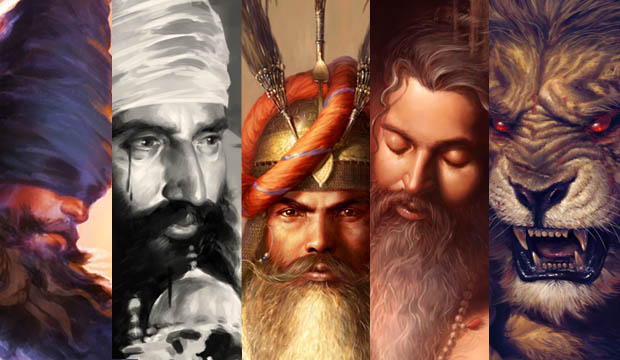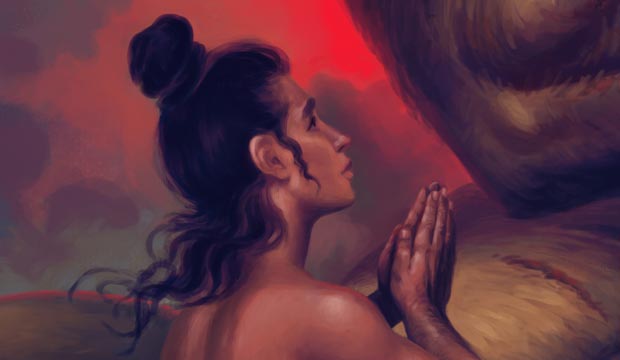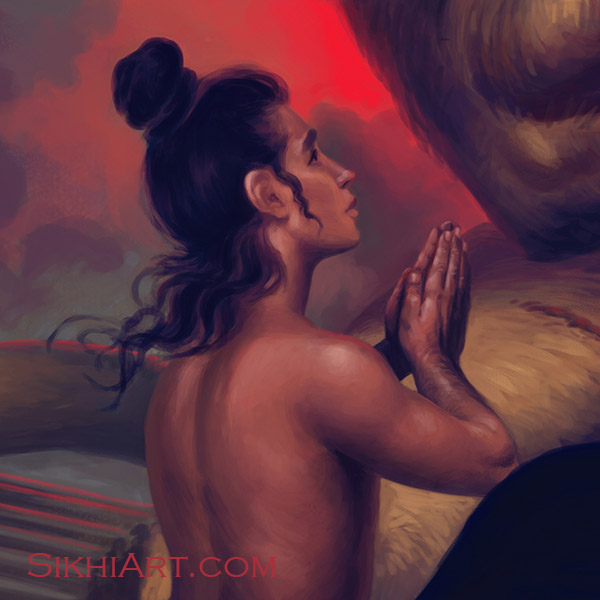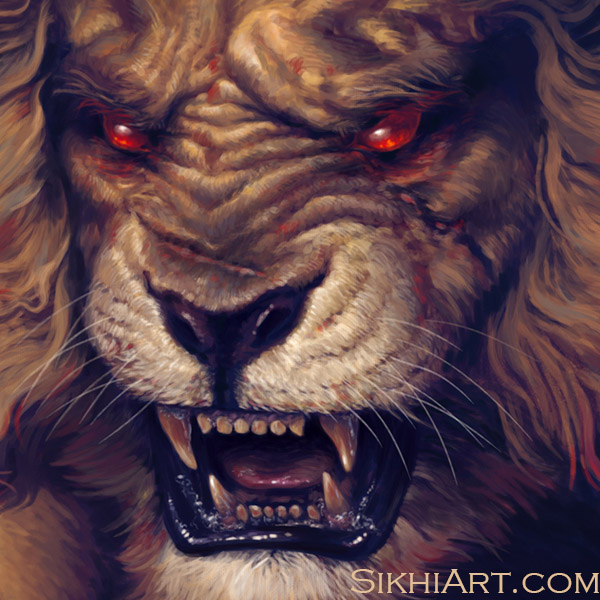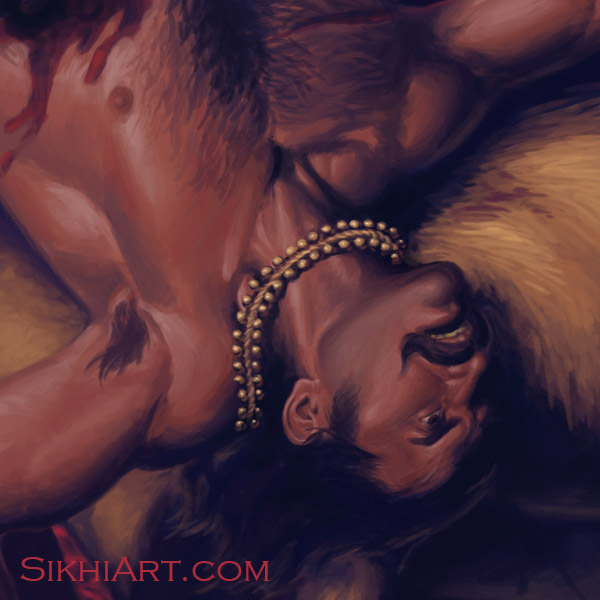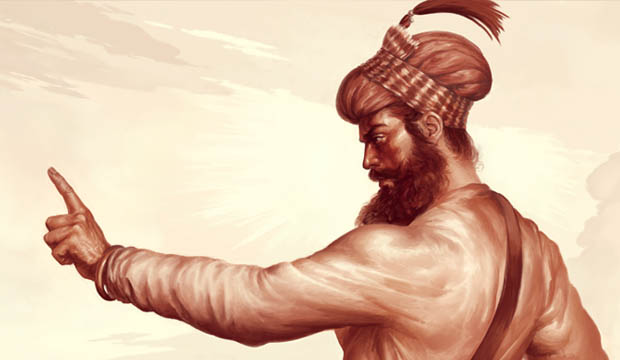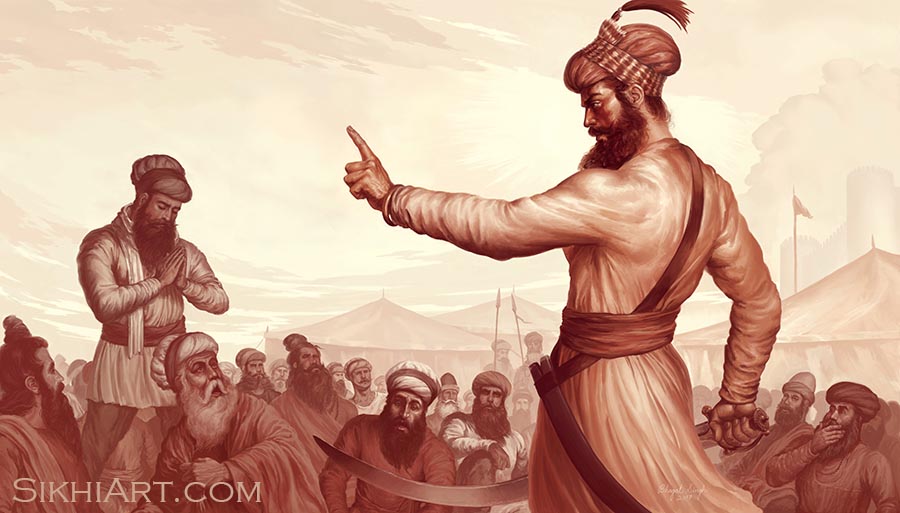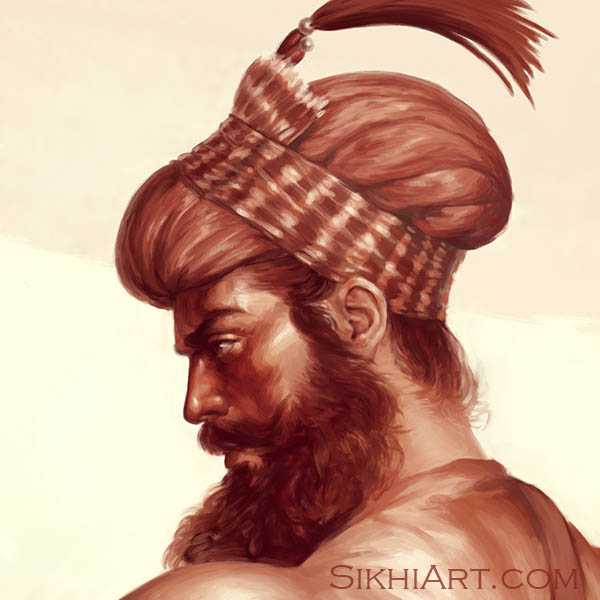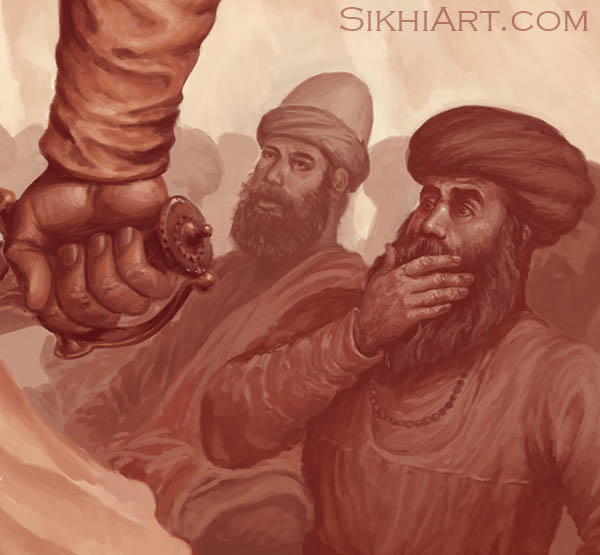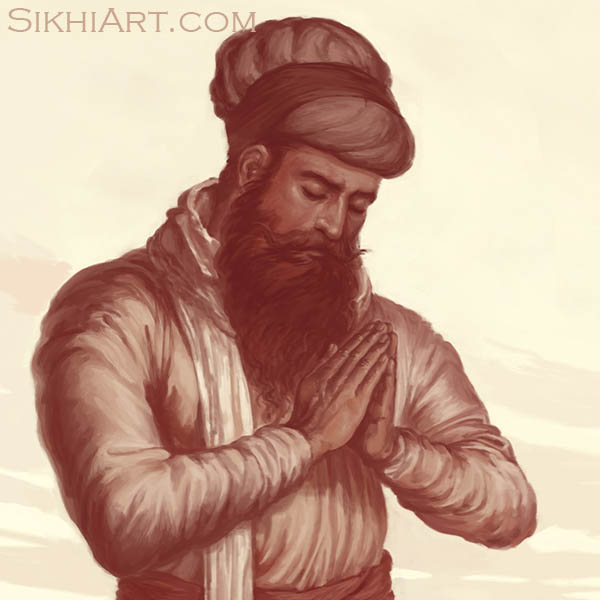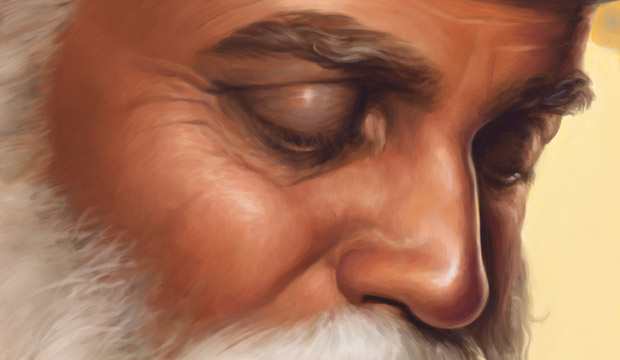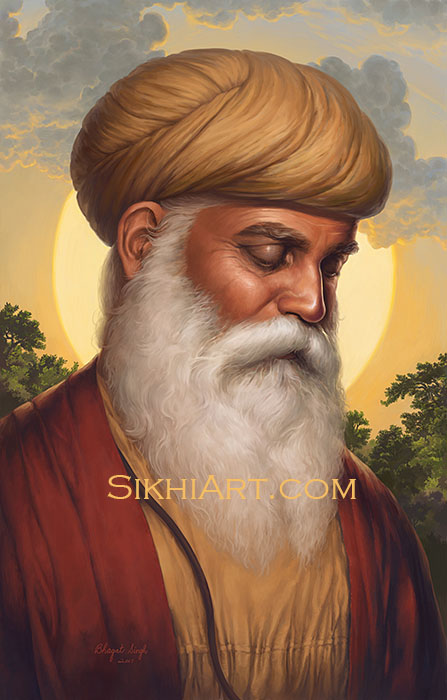“Patiently meditate on the virtues of Guru Arjun Dev ji.”
– Kavi Kalya ji (Guru Arjun Dev ji, 1407)
When I was painting Guru Arjun Dev ji, I meditated a lot on his qualities.
Initially my meditation was quite shallow to be honest. I didn’t really feel much. The history of his martyrdom felt cold and distant. I had no warm and visceral feelings of the significance of Guru Sahib’s actions, knowing very well what he did.
But as my painting developed, my appreciation for Guru Arjun Dev ji grew.
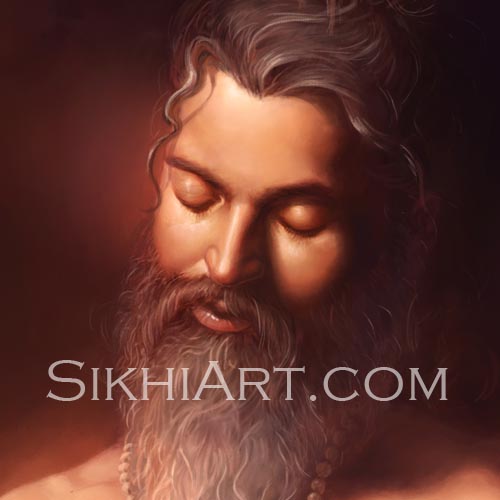
Guru Arjun Dev ji’s heavenly poetry in Guru Granth Sahib, his efforts to write down and compile the poems of Vaishnav saints from all over India to preserve their legacy, his efforts in commissioning the building of Harimandir Sahib, his influence all over northern India, which led to his martyrdom, and then his martyrdom itself. All his efforts during his life till the very end, filled me up with inspiration and appreciation, as I contemplated them more and more.
This feeling of appreciation eventually grew so intense that one day while meditating on him, I found myself uncontrollably moved to tears by the greatness of his divine being.
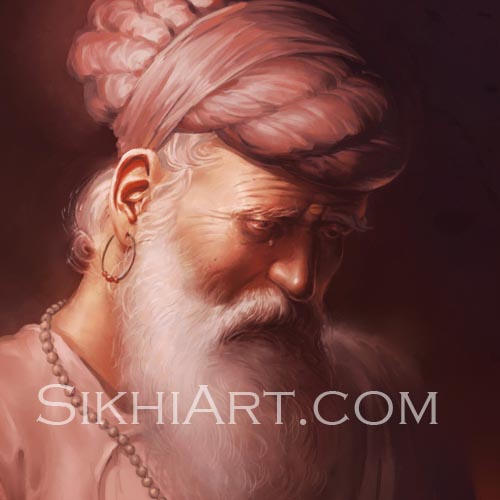
I remember it clearly, I was listening to the following hymns rendered by Bhai Harjinder Singh ji.
ਹਉ ਨਾ ਛੋਡਉ ਕੰਤ ਪਾਸਰਾ ॥ ਸਦਾ ਰੰਗੀਲਾ ਲਾਲੁ ਪਿਆਰਾ ਏਹੁ ਮਹਿੰਜਾ ਆਸਰਾ ॥1॥ ਰਹਾਉ ॥
I will never leave the intimacy of my Husband God. My Beloved Lover is always and forever colourful. He is my vital support. ||1||Pause||
– Guru Arjun Dev Ji, 761
ਨੈਣ ਅਲੋਇਆ ਘਟਿ ਘਟਿ ਸੋਇਆ ਅਤਿ ਅੰਮ੍ਰਿਤ ਪ੍ਰਿਅ ਗੂੜਾ ॥
With my eyes I have seen Him, sleeping upon the bed within each and every heart; my Beloved is the sweetest ambrosia.
– Guru Arjun Dev Ji, 924
I was going deep into it. I was contemplating Guru Arjun Dev ji’s martyrdom. I saw Guru Sahib burning on the hot plate, the full scene of his torture.
My eyes teared up and I began crying. I saw a glimpse of Guru Sahib and how he saw his Beloved right next to him, and everywhere, and how he remained by his side until his departure.
It was a very moving moment for me.
I was in complete awe.
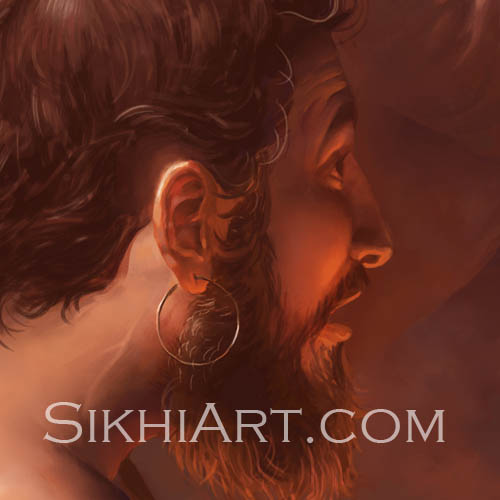
I take great inspiration from Italian master painters from the Renaissance period, when art was flourishing in Europe. I study their masterpieces a lot, meditating on each one and learning from their technique, composition and style.
However my painting of Guru Arjun Dev ji’s martyrdom was specifically inspired by the work of Caravaggio and Rembrandt. Caravaggio and Rembrandt had the ability to capture meditative moments really well.
Guru Arjun Dev ji voluntarily accepted his suffering as a gift and this gave him immense strength and peace. I knew I wanted Guru Sahib’s painting to be meditative.
I wanted it to be tragic yet peaceful.
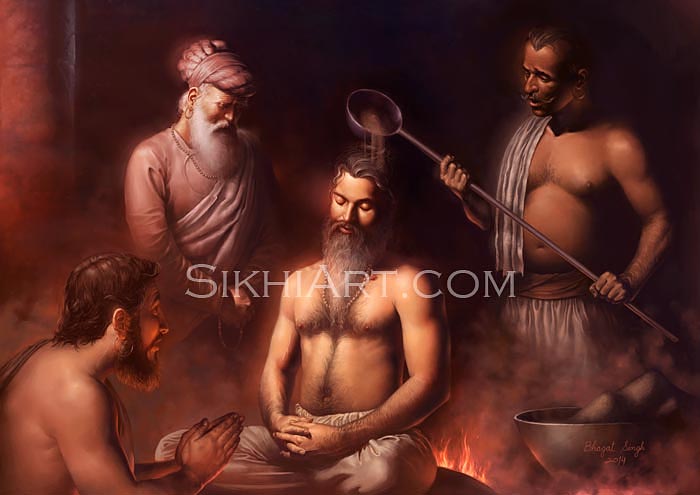
When you let suffering happen to you, you fall victim to its pressure, you become more and more fearful. However when you voluntarily accept this suffering, it will inspire courage in you.
To voluntarily accept suffering which you cannot do anything about, which is outside of your control, to voluntarily accept this unavoidable suffering, activates particular circuits in the brain. These circuits do not activate if you let the suffering happen to you. Only when you choose to accept the suffering, do they activate and start running.
With repetitive activation, these circuits can change your entire perception of reality!
This is written by Guru Nanak Dev ji in Jap ji Sahib as – Hukam Raza-e Chalna and that doing so rips apart the dense haze that our mind is trapped in.
Guru Sahib is the living embodiment of Jap ji Sahib, and this is the lesson he left behind for us to follow. His martyrdom is an example for Sikhs today to voluntarily accept the suffering they go through in their day-to-day life.
When I contemplate this, I feel inspired and I try to follow in Guru Sahib’s footsteps to the best of my ability. To voluntarily accept my suffering, as much of it as possible. That is what I take from this painting, that is the reminder I get when I contemplate Guru Arjun Dev ji.
Thanks for reading.
Bhagat Singh
Sikhi Art
